Affiliate disclosure: This post may contain affiliate links. Please see our Privacy Policy.
Nannyberries are incredibly sweet wild fruits that grow in clusters from prolific bushes. They ripen in the late fall and sometimes hang on the branches all winter long. They’re sometimes called sweet viburnum because with a taste somewhere between a prune and a banana, they’re a welcome taste of the tropics up here in the north country.
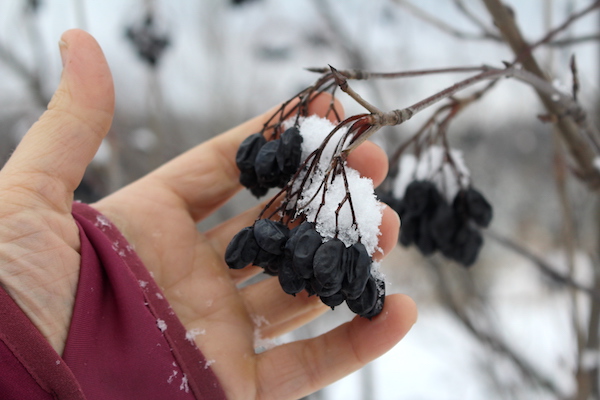
There’s something about foraging with kids that makes you skip over prickly thistles and bitter dandelion greens, and instead, head straight for the wild fruits. This summer I spent just about every day out foraging with my 2 and 4-year-old foraging buddies, and we found an amazing array of wild edible fruits and berries.
Dozens of species, and on one particular hike we harvested more than 20 varieties in just a few hours. Even with all those choices, nannyberries are still one of my daughter’s favorites…
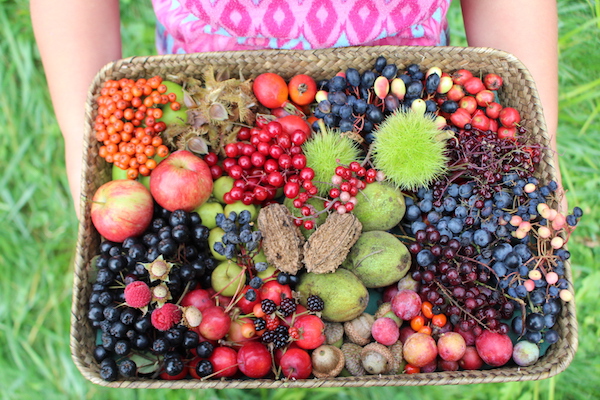
Also called sweet viburnum and sheepberry, nannyberries grow large clusters of drooping purple/black fruit on sturdy bushes. Like other edible viburnum species, they prefer wet soils, often growing in standing water and along pond/river banks.
Though they’re native to the North East and North Central US, nannyberries are often used in landscape plantings because they’ll tolerate poor soils. You can sometimes find them outside of public buildings and in strip mall parking lots.

There’s another closely related species in the south that’s known as blackhaw, sweet haw or shag bush (Viburnum prunifolium). To the best of my knowledge, the plants are more or less indistinguishable in both appearance and taste.
I can’t verify their similarity since I’ve never to my knowledge seen blackhaws, given that they’re not native here in Vermont.
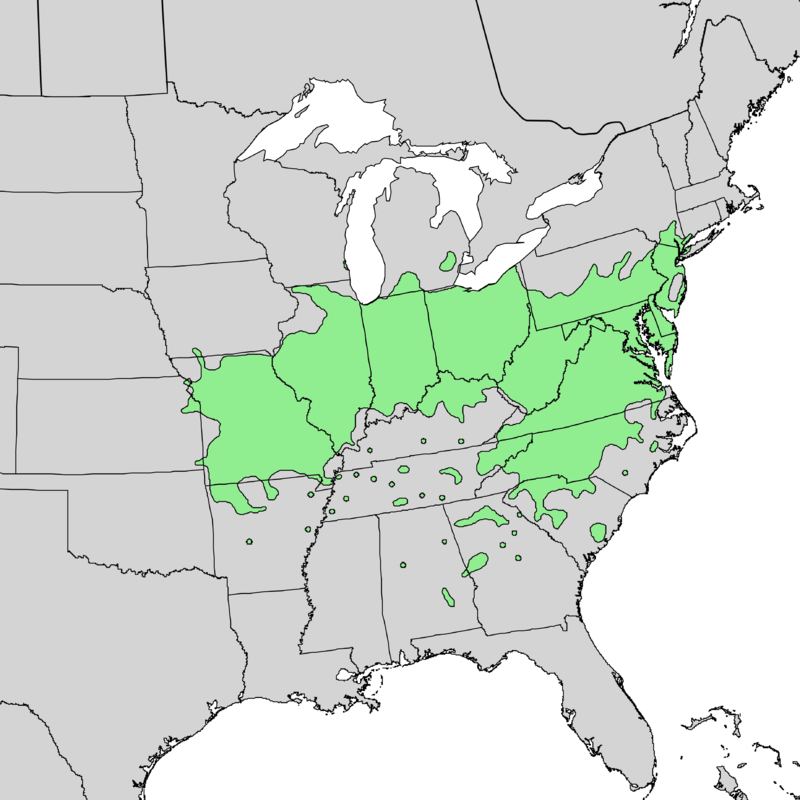
Other sources say they’re the same as Northern Wild Raisin (Viburnum nudum), but that’s incorrect. Wild raisin is a completely different plant, though closely related. The fruits grow in upright clusters, are much smaller and taste more or less exactly like raisins (instead of the banana/prune flavor of nannyberries).
While it’s hard to pick and process the tiny wild raisin fruits, nannyberries are large and well worth your effort. Watch out for those gigantic seeds inside though…
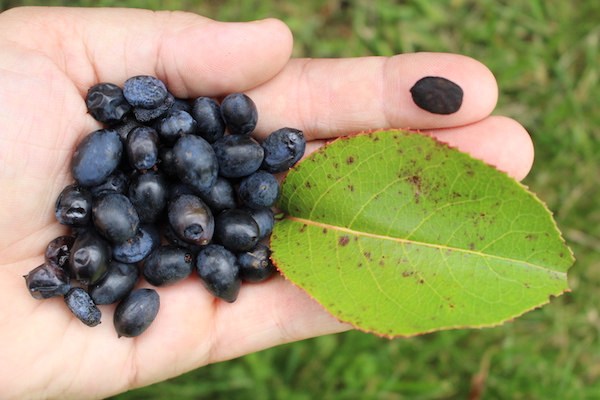
Nannyberry Identification
Viburnum lentago grows in dense multi-stemmed bushes, and to me the growth habit looks a bit like a lilac hedge. In the early spring, the flowers are huge clusters of bright white blossoms, and they’re a favorite of the bees.
The showy spring flowers mean that they’re common landscape plantings. Add in the fact that they have striking fall foliage and hold their fruit through the winter, and you have 4 season interest. You’ll often find them at the edges of parking lots and around municipal buildings.
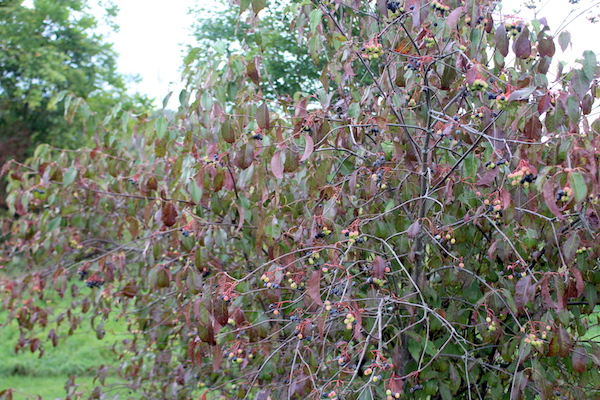
Early in the season, nannyberries start out in clusters of lime green fruit. They’re camouflaged in the branches, and it can be hard to pick them out.
Add in the relatively non-descript leaves and it’s hard to spot nannyberries in the early season.
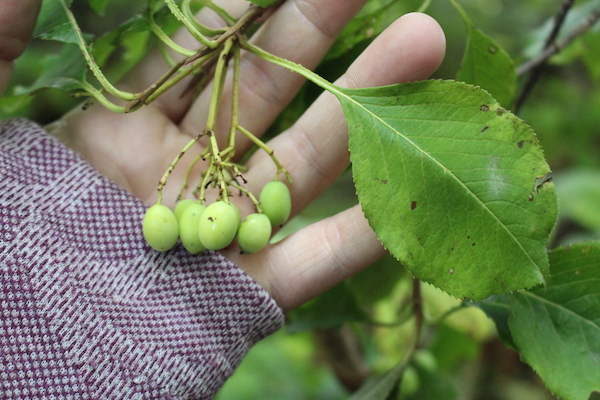
The bark of individual nannyberry branches is also relatively non-descript, so it’s not too helpful.
It has a reddish/brown hue and small lenticels, but that’s true of many different native fruit species up here in the Northeast.
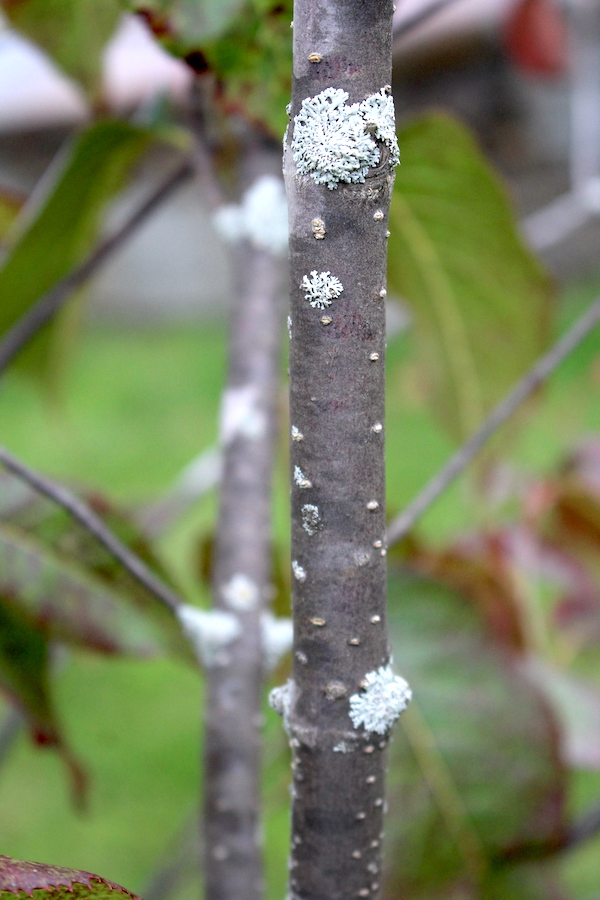
Nannyberries, for the most part, make themselves known in the early fall just as the foliage begins to turn and the first fruits are ripening. The fruit will shift from camouflage mode to bright pink. At this point, they look a good bit like highbush cranberry, but the leaves are quite different.
They won’t stay in this stage long, and soon enough the fruits will pass from pink to a deep purple-black color. Starting just a few at a time, eventually ripening into a cluster of black fruit late in autumn.
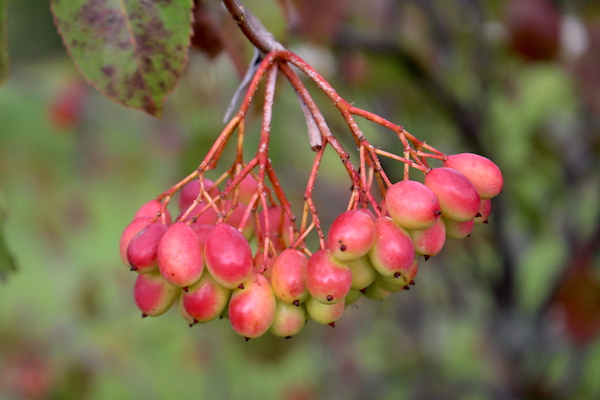
Inside each ripe nannyberry, you’ll find a gigantic flattened seed. The seeds are hard, and not for eating. I honestly have no idea if the seeds themselves are edible, but they’re large and hard enough that I’ve never bothered.
My husband eats wild raisins whole, seed and all, and says the seeds add a pleasant crunch. Nannyberry seeds are much bigger though, and you’d have trouble getting your teeth through one of these.
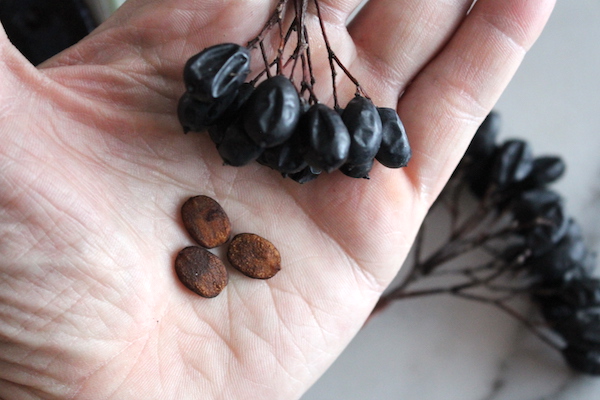
Nannyberry Look-Alikes
Most of the nannyberry look-alikes are also edible viburnum species, which are also edible and delicious. Nonetheless, as with any wild edible, be confident in your ID before you eat them.
There are plenty of other toxic purple-black fruits around in late fall and early winter, such as buckthorn, and while I don’t think they look anything alike, I’m always surprised what I see misidentified in foraging groups by optimistic foragers that hope they’ve found a tasty edible fruit.
Highbush Cranberry (Viburnum trilobum, V. opulus & V. edule) ~ Before the fruit ripen, they look like highbush cranberries. The fruits are the same oval shape and both plants have downward hanging fruit clusters. While nannyberries have simple oval-shaped leaves, highbush cranberries have three-lobed leaves that are vaguely similar to maple leaves at first glance.
During harvest time, it’s easy to tell them apart, as highbush cranberries ripen to a bright red color.
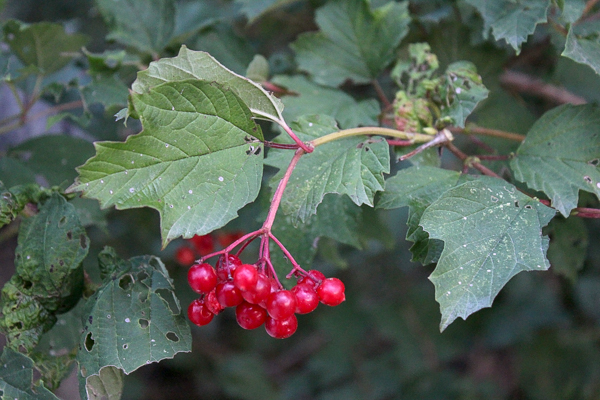
Northern Wild Raisin (Viburnum nudum) ~ Another edible viburnum species, northern wild raisin has much smaller fruit. The clusters of fruit are upright (instead of downward facing like nannyberries).
Both have dry, sweet pulpy fruit, but nannyberries have a prune/banana type flavor, while wild raisins taste more or less exactly like raisins. Wild raisins also ripen much sooner, and they’re generally completely picked off by the birds by early to mid-October (when nannyberries are just starting to ripen).
Many people mistakenly believe that these two are the same species, but they’re actually quite different once you’ve found them.
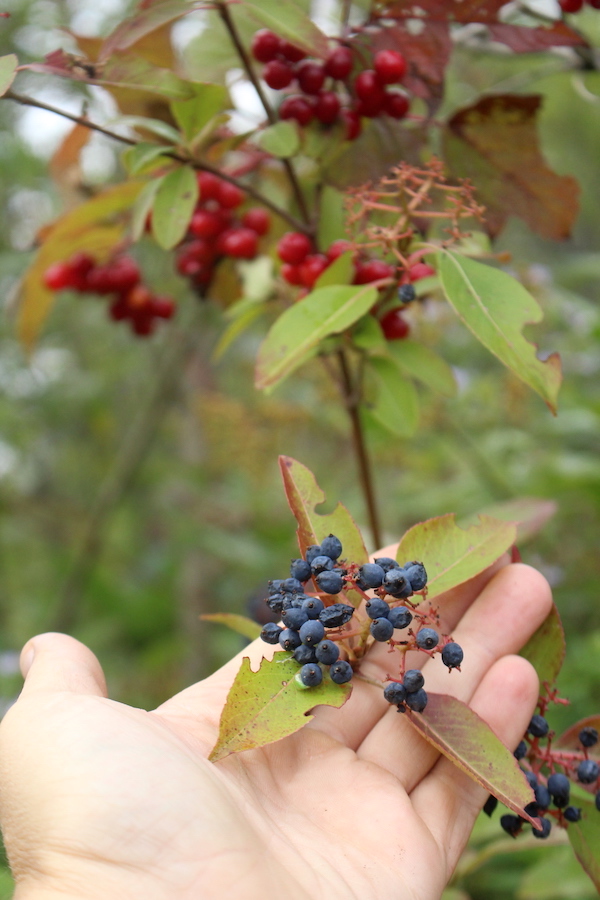
Hobblebush (Viburnum lantanoides) ~ Yet another edible viburnum species, these plants are quite different but the fruit looks similar. Hobblebush has gigantic leaves that look somewhat similar to linden tree leaves, but they have upright facing clusters of dark black fruit.
They’re also edible, with a similar, yet distinct flavor.
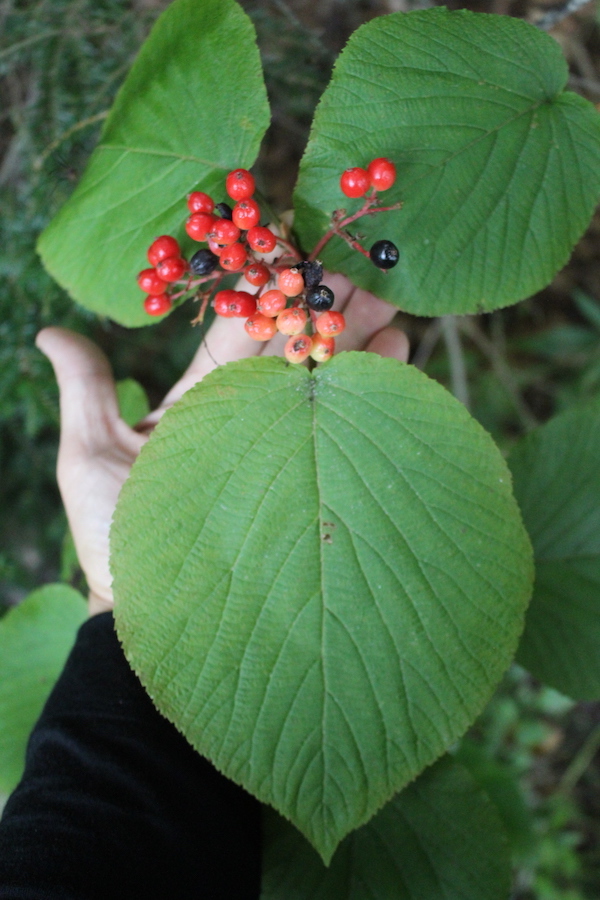
Harvesting Nannyberries
Nannyberries ripen in stages, and in early autumn the very first fruits will begin to darken within the cluster. They’ll start a pale lime green, then turn a bright pink before eventually darkening to a deep purple/black.
Unfortunately, these don’t have the best flavor. Early season nannyberries aren’t very exciting, and they aren’t nearly as sweet or flavorful as the later ones.
Early October is when you’ll see the first fruits ripen, but it’s best to wait until the whole clusters darken.
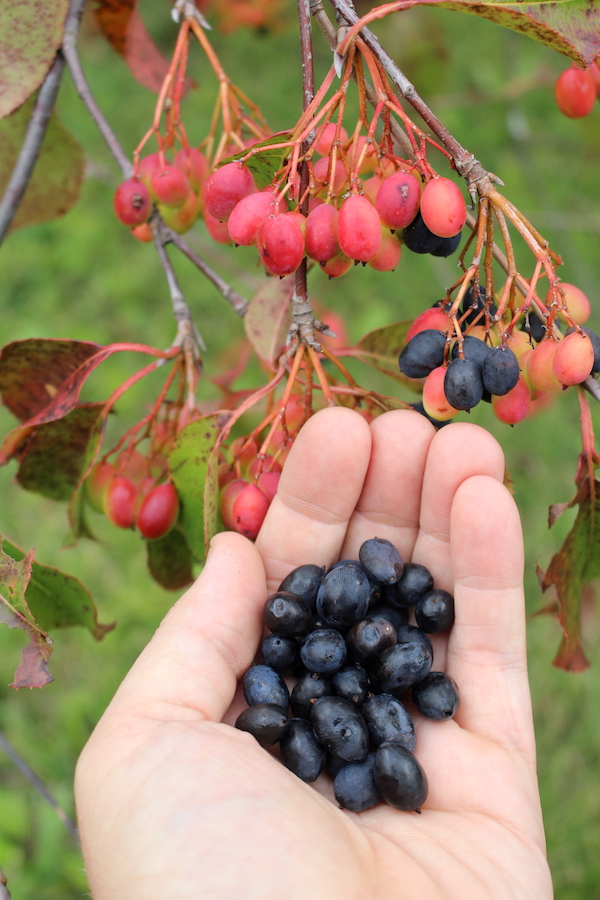
This, of course, is a matter of opinion. My 4-year-old daughter thinks they’re best just as they ripen, even though they’re not as sweet.
Maybe it’s just the scavenger hunt, picking out the single black nannyberries from the clusters of unripe pink fruit.

Early October is when we start to see our first frosts here in the north country and looking at these clusters of unripe nannyberries you’d think that they’d never make it.
Nannyberries don’t really mind cold all that much, and the berries won’t fully ripen until at least early November. After that, they’ll hang on the plants through most of the winter.
Since they ripen after most of the birds have left for the year, they just patiently wait until the birds return in the spring. These dark purple berries will quickly disappear once the flocks return, but in the meantime, they’re the perfect snack out on a December snowshoe hike.
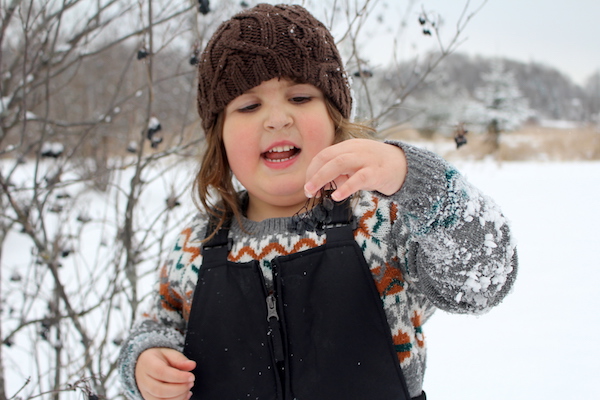
While the berries hid in the summer among the green leaves, they’re easy to spot against the background of white winter snow.
Nannyberries were made for winter foraging…
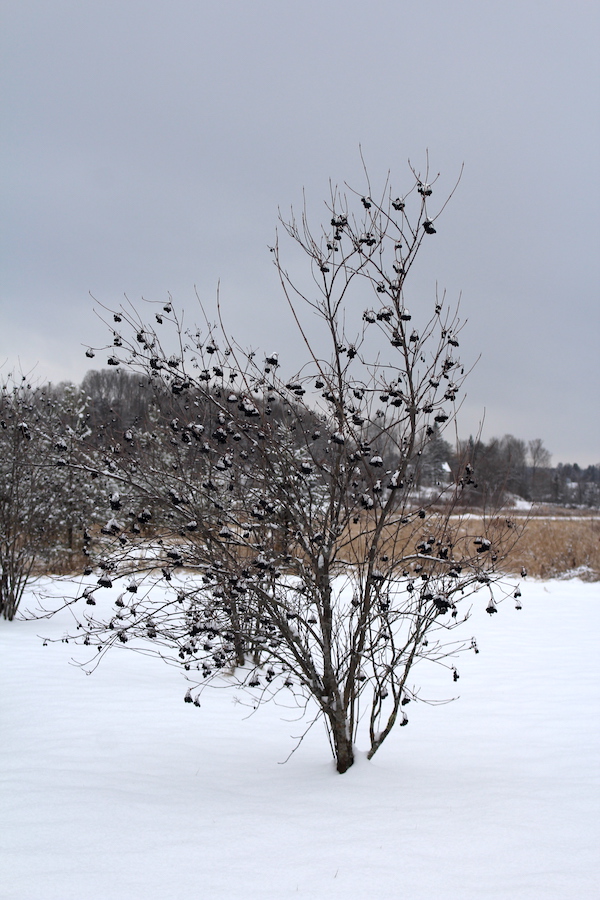
Processing Nannyberries
While you can eat nannyberries raw right out of hand, most people bring them home and process them. The fruit is quite dry, and you need heat and water to separate it from the seeds.
Start by removing the stems, leaves and other debris from the ripe berries.
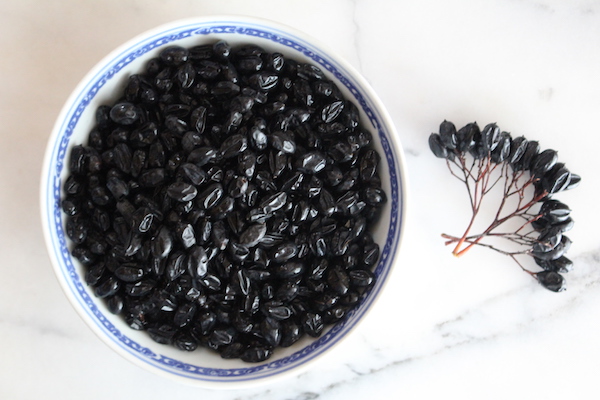
Next, place the berries in a saucepan and cover them with water. Bring to a boil and simmer for about 20-30 minutes, occasionally mashing to help the fruit separate from the seeds.
Separate the seeds from the pulp by passing it through a food mill, or pressing it through a fine-mesh strainer. The berries can only be processed hot, so work quickly.
If the pulp cools too much, just place it back in the pan, add a bit of water and re-heat before straining again.
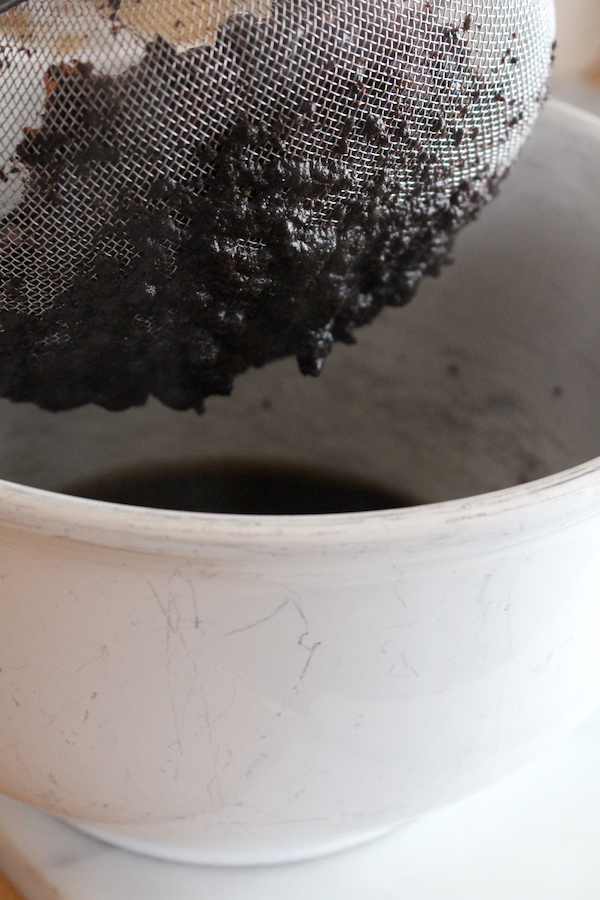
The finished nannyberry puree should be roughly the consistency of mashed bananas, but that’ll vary based on the amount of water added during processing.
The next step is to remove some of that water, by drying the puree out a bit. You can do this by spreading the pulp on a tray in the oven and then baking at 300ish degrees for about 30-45 minutes.
A crockpot set to low also works well, as does very low simmering in a pot on the stove.

The goal is to get it to something that roughly approximates apple butter in texture. Thick, spreadable but stands on its own and holds its shape.
At this point, the nannyberry puree is great in place of jam, or you can sweeten it further as to taste. Just remember, they call them sweet viburnum for a reason, and likely you won’t need added sweetener.
Nannyberry Recipes
The end result of nannyberry processing is a thick fruit butter, that’s delicious in its own right. Be aware that just about any nannyberry recipe you find starts with thickened nannyberry butter that’s been dried out a bit to remove the water added during processing. (Nannyberries are not used whole because of their large, hard seeds.)
For more details on that process, and a delicious recipe, Forager Chef’s recipe for Maple Nannyberry Butter is a great place to start.
That said, it’s pretty hard to find nannyberry recipes of any sort, given that they’re a pretty uncommon wild edible.
I did find one nannyberry cake, and though I wasn’t excited about that particular recipe, I did use my favorite maple banana bread recipe to make nannyberry bread. Just start with thick sweetened maple nannyberry butter, and use it in place of the bananas.
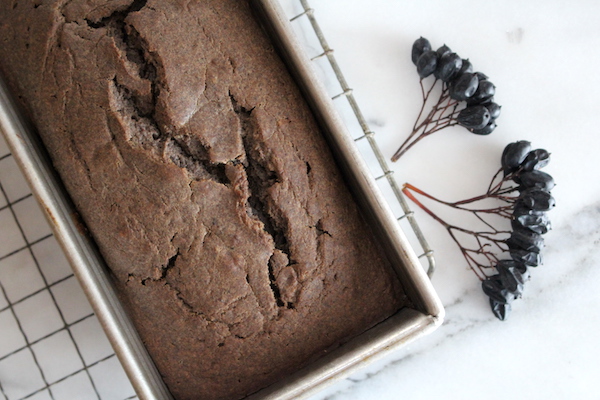
The book Abundantly Wild: Collecting and Cooking Wild Edibles in the Upper Midwest by Teresa Marrone has a number of nannyberry and blackhaw recipes. Recipes for nannyberry carrot cake and nannyberry applesauce are included. She mentions making them into both BBQ sauce and mustard, but doesn’t provide recipes.
Lastly, I found a recipe for nannyberry wine, and it seems plausible. I don’t imagine I’d enjoy their flavor translated into wine, but give it a try, you might as well.
More Edible Wild Berries and Fruits
Looking for more wild fruit foraging guides? Here’s a few more to keep you going…
- 50+ Edible Wild Fruits and Berries ~ A Foragers Guide
- Foraging wild strawberries
- Foraging Northern Dewberry
- Foraging Red Blackberries
- Foraging Elderberries
- Foraging Hawthorn Fruit















Hi, I found two Nannyberry shrubs, First one has oval fruit and seed, and other has oblong fruit and seed, Both taste the same and other then shape I didn’t notice any differences. the Oblong one has leaves on the tree which confirm it’s Nanyberry, second Oval one has no leaves left, so I can’t tell. the fruit looks the same except the shape, same for the seed. Are they the same thing?
Good question, and I honestly couldn’t say without being there. My guess is that they’re just slightly different fruit shapes of the same plant, but you’ll have to use your best judgement on this. If you can’t positively ID something, don’t eat it. Good luck!
Any idea if the flowers can be used to make syrup/etc? Or is just the fruit edible?
Good question, and I honestly don’t know the answer. I’ve never worked with the flowers, and though I’d suspect they’re edible, I don’t know that for sure.